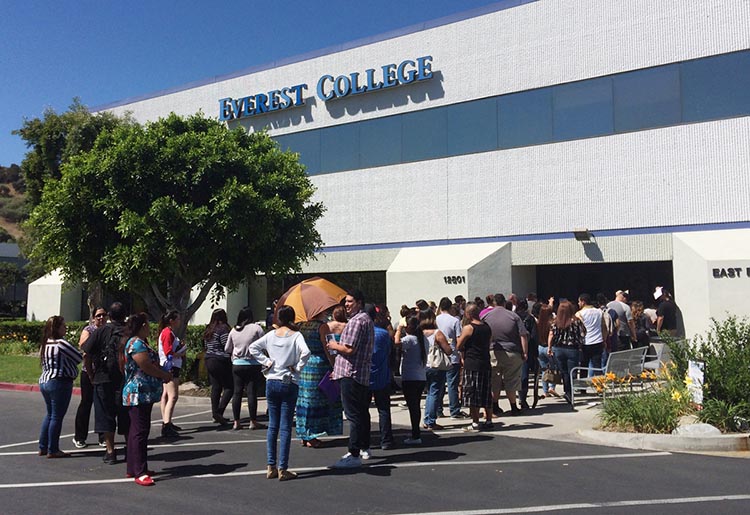
Why the consequences of choosing for-profit colleges over community colleges could be dire
From The Hechinger Report
By Aaron Ament and Ajita Menon
November 24, 2021
When the pandemic hit, consumer advocates and higher education experts issued a grim warning: Predatory for-profit colleges were poised for a revival. A year later, those predictions have proven depressingly accurate.
While community colleges have struggled with enrollment, for-profit college attendance has skyrocketed — especially among adult learners. Lax federal oversight during the Trump presidency accelerated the surge. Left unchecked, this trend threatens both the stability and fairness of America’s economic recovery.
To counteract it, state and federal leaders need to play defense as well as offense, by cracking down on predatory for-profits and providing better alternatives for Americans who desperately want access to more opportunity through higher education.
In difficult economic times, unemployed and underemployed workers often turn to education for a path to full employment. In recent recessions, unscrupulous for-profit college executives have welcomed them with open arms and lofty, fantastical promises.
Today we’re watching the same movie on repeat. In fall 2020, for-profit enrollment among first-time adult students age 25 and over jumped by more than 13 percent while community college enrollment plummeted by more than 36 percent, according to the National Student Clearinghouse Research Center.
The consequences of students choosing for-profit colleges over community colleges could be dire — especially for students historically marginalized by America’s system of higher education.
Compared to their public and nonprofit counterparts, for-profits disproportionately enroll Black and Latino students. But they charge roughly five times the annual tuition and fees of community colleges and account for half of all student loan defaults, despite serving just 10 percent of all students.
Many for-profit colleges leave most of their students worse off than they were before enrolling.
There are several executive and legislative actions the federal government can and must take to protect students. Among them: reinstating gainful employment rules, which ensure that students who complete career college programs earn enough to repay their debt.
Others include bringing enforcement actions to prevent colleges receiving federal student aid from defrauding or abusing their students and holding executives personally accountable for predatory behavior.
But we also can’t ignore what data shows us about student demand. Working adults are hungry for educational opportunities that are flexible enough to fit their lives.
If we want to meet that demand with quality, accountability and oversight, we need robust public investment in new educational models.
Historically, many adult learners have fallen through a gap in our higher education and workforce development systems. Colleges provide the skills and credentials students need for long-term security, but they traditionally work on a semester system, require students to learn at specific times and places and are less responsive to changing demands in the economy.
Many for-profit colleges leave most of their students worse off than they were before enrolling.
Workforce development programs offer fast and flexible training to get displaced workers back to work, but often without actually developing the skills the workers need to break the cycle of insecure employment and unemployment.
For-profits have skillfully exploited that gap by offering flexible, online programs tailored to specific career trajectories. But although many charge high tuition and offer shoddy quality, Americans will continue to turn to them unless we offer high-quality, affordable, public alternatives.
As the pandemic showed, simply transferring existing content to a website and calling it “online education” is not the answer. Instead, we need programs designed from the start around the needs of working adults who have lost their jobs or need better ones.
That means programs that are routinely responsive to the labor market so that students leave with skills that enable them to get stable, well-paying jobs. It means coursework that students can complete at their own pace and on their own schedule — even when cobbling together gigs, raising kids or caring for parents and grandparents.
And, of course, it means the open access, low cost and public oversight that have made community colleges such a vital driver of opportunity in America for decades.
That kind of innovation can feel scary and risky. Not every idea will pan out. But the bigger risk rests in failing to act at all. We know what lies down that path: millions of Americans turning to for-profit colleges that rarely make good on their lofty promises.
We owe it to prospective students to return real oversight to the for-profit industry and to invest in high-quality, low-cost community college and workforce development programs that truly offer a path to a brighter future.
Photo: The Hechinger Report
Read this and other stories at The Hechinger Report

